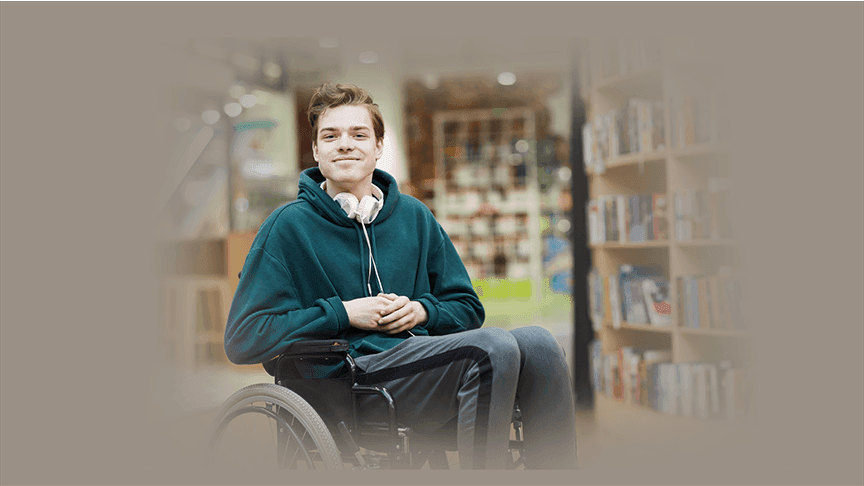
Spinal Cord Injuries: The Impacts, Current and Future Treatments
Looking at treatments with the potential to enhance outcomes for those suffering from spinal cord injuries.

In the United Kingdom (UK), there are an estimated 40,000 people living with a spinal damage and each year, 1,200 people become paralysed. More than half of people living with a spinal cord injury (SCI) are between the age of 15 and 30, and nearly three-quarters of those paralysed are male. While some spinal cord injuries are a result of infection or disease, as many as 90% of cases are caused by traumatic, but preventable incidents like road traffic accidents, falls or violence. Figures are broken down further below:
- 41% of injuries are related to falls. Of this figure, 12.6% of SCIs occur after a fall from height e.g. falling from scaffolding or on a construction site. 1
- Road traffic accidents are responsible for over 36% of spinal cord injuries. 15% of these cases are a result of accidents involving cars, lorries or buses and over 10% are connected to motorbike incidents.
- 11.6% of the statistics relate to sporting injuries. Diving, horse riding and rugby are the main kinds of sporting activity in which spinal cord injuries are most common.
- If you have been knocked over, involved in a collision or had a lifting accident then you are part of the 4.2% making up spinal injury cases. Some of these accidents happen in the workplace, for example, when someone is lifting heavy boxes in a warehouse, colliding with an employee or being knocked down by a vehicle in a factory setting.
- Trauma and physical assault make up the remaining portion of the figures.
A Spinal Cord Injury is catastrophic. When a Spinal Cord Injury occurs a permanent scar, called the Glial scar, forms in the spinal cord at the site of the injury in a short period of time after the accident. This Glial scar is permanent and blocks neural signals from the brain travelling down the spinal cord below the point of injury, halting and severely disrupting normal body function and causing numerous profound, severe and in some cases potentially fatal complications.
Damage to any part of the spinal cord or nerves can cause temporary or permanent changes in sensation, movement, strength and body functions below the site of injury. Symptoms of a SCI include:
- Numbness, tingling, or a loss of or changes in sensation in hands and feet.
- Paralysis that may happen immediately or develop over time due to swelling and bleeding.
- Pain or pressure in the head, neck, or back.
- Loss of movement.
- Weakness or inability to move any part of the body.
- Unnatural positions of the spine or head.
- Loss of bladder and bowel control.
- Problems with walking.
- Difficulty breathing.
- Changes in sexual function.
Traumatic SCI can be classified by two types: complete and incomplete.
- A complete injury occurs when there is no nerve communication below the injury site and sensory and motor function below this site is lost.
- An incomplete injury occurs when the spinal cord is still able to transmit some messages to or from the brain.
There is no cure for a SCI, treatments currently being used today are not effective at treating the injury site Glial scar or returning bodily function, they are more concerned with patient survival initially and adapting to the impacts of the injury such as paralysis thereafter:
Immediate Treatment
- Immediate treatment for a spinal cord injury is critical to minimise the effects of head or neck trauma. Because of this, treatment of the injury often begins at the site of the accident scene. Immobilizing the spine is done quickly and gently by using a rigid neck collar and carrying board for transport to the hospital. Treatment at the hospital may include emergency surgery, to remove fragments of bones, foreign objects, herniated disks or fractured vertebrae that could be compressing the spine.
Long-term Treatment
- Rehabilitation begins in the early stages of recovery and typically includes physical and occupational therapy, a rehabilitation psychologist, a dietitian and a physiatrist that specializes in SCI.
- Neuroprotection prevents cell death and protects surviving nerve cells from further damage; repair and regeneration, which encourages the spinal cord’s intrinsic ability to self-repair and stimulates the regrowth of nerve cell projections.
- Cell-based therapies replace damaged nerve or support cells with other cell types, including stem cells.
- Neuroplasticity trains the central nervous system circuits to restore body functions and form new nerve connections and pathways. The spinal cord is capable of making adaptive changes and improvement.
Looking ahead
These treatments along with newer technologies, may provide people with spinal cord injuries the possibility to lead very productive and rewarding lives. And now there is an exciting new treatment on the horizon.
In this month’s issue, we introduce NeuroSolv Therapeutics, a Belfast, Northern Ireland and Baltimore, USA based ethical business which has developed and patented Perineline™, a two-part, non-surgical therapy to treat spinal cord injury based upon Neural Signaling Interventions and direct treatment of the glial scar. The glial scar is left in the spinal cord after injury, blocking the neural signals to the body. Visit http://www.neurosolvtherapeutics.com for more information.
To learn more about NeuroSolv Therapeutics Perineline™ treatment, click here.
Disclaimer of Endorsement: NeuroSolv and AscellaHealth neither endorse nor recommend any commercial products, processes, or services by trade name, trademark, manufacturer, or otherwise. Any references on the NeuroSolv or AscellaHealth Websites; within media materials or downloaded from this site, does not necessarily constitute or imply an endorsement or recommendation by NeuroSolv or AscellaHealth.